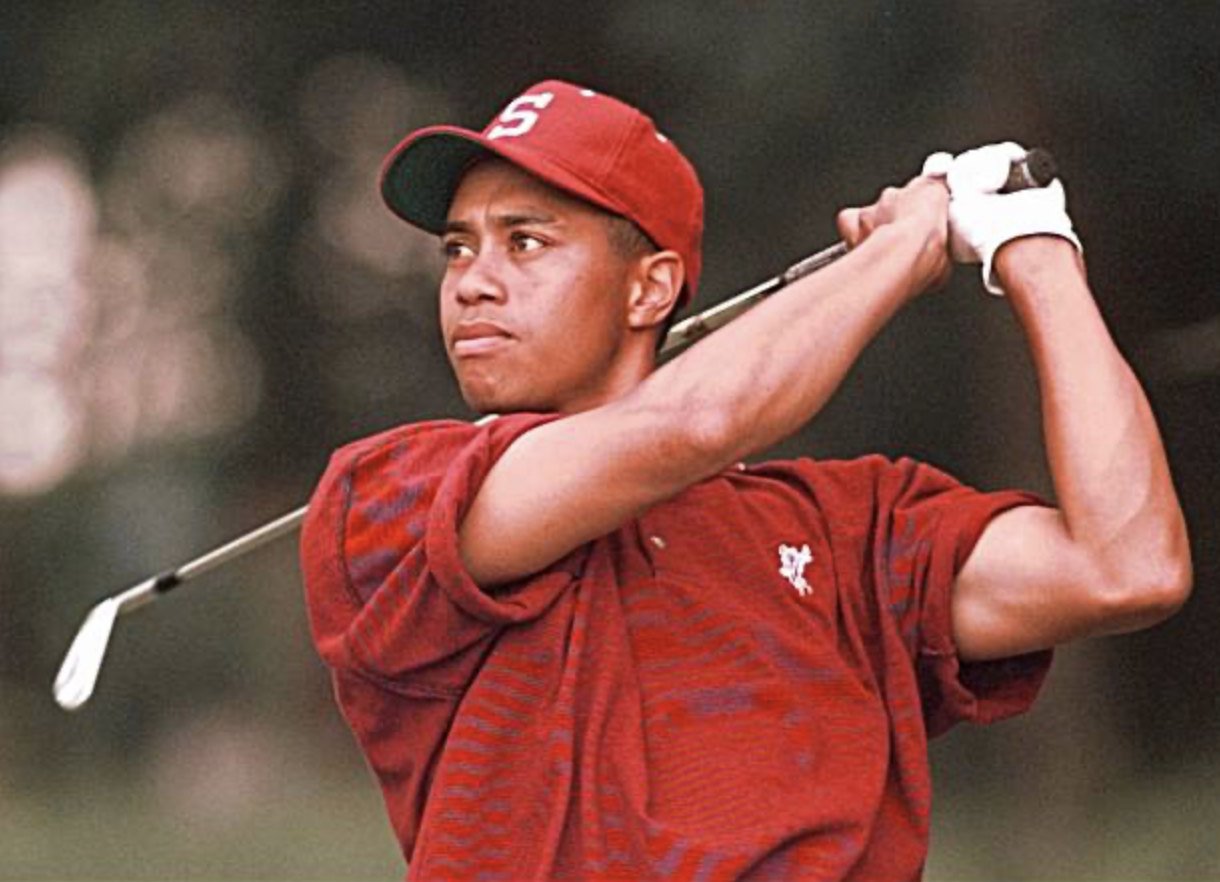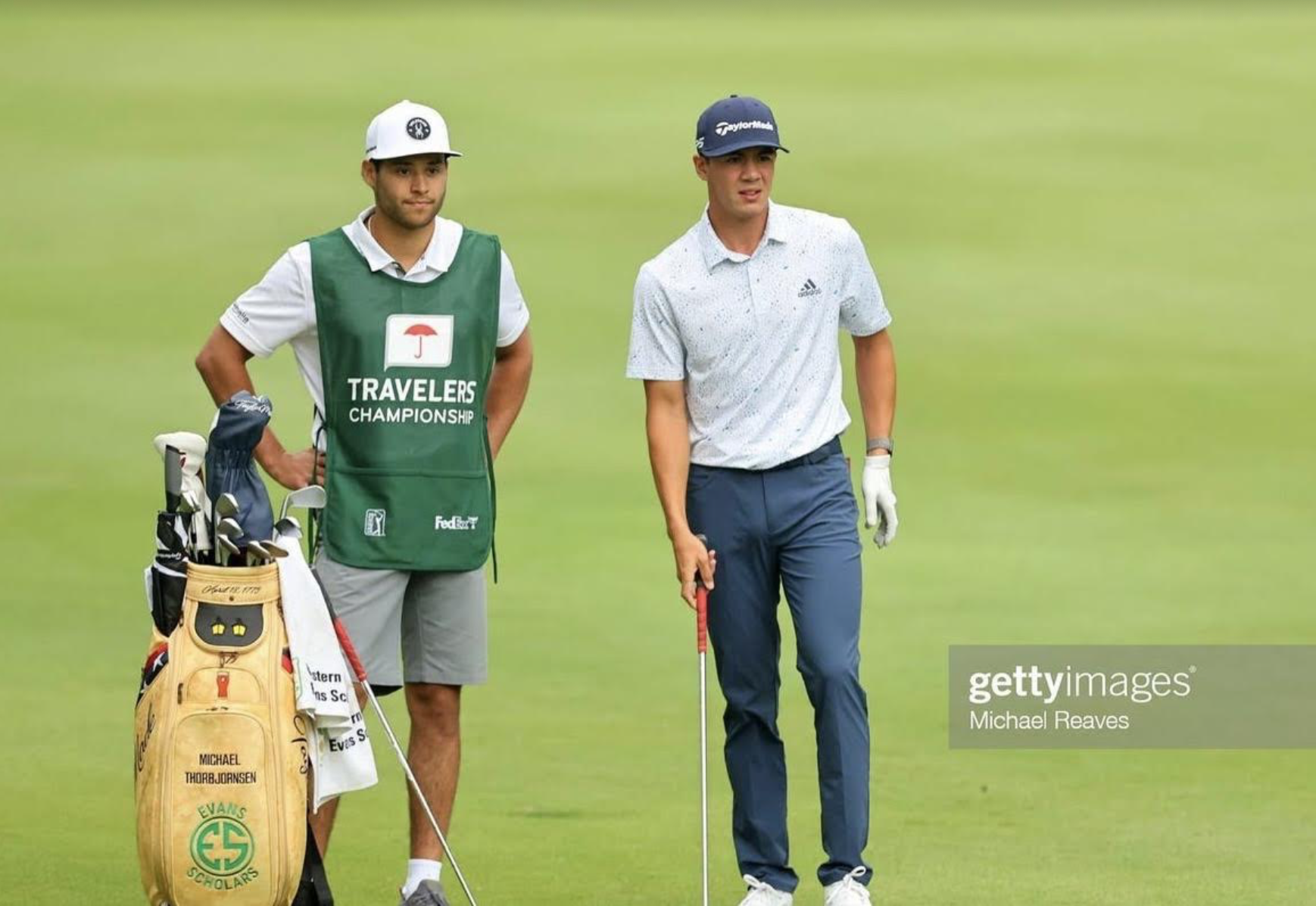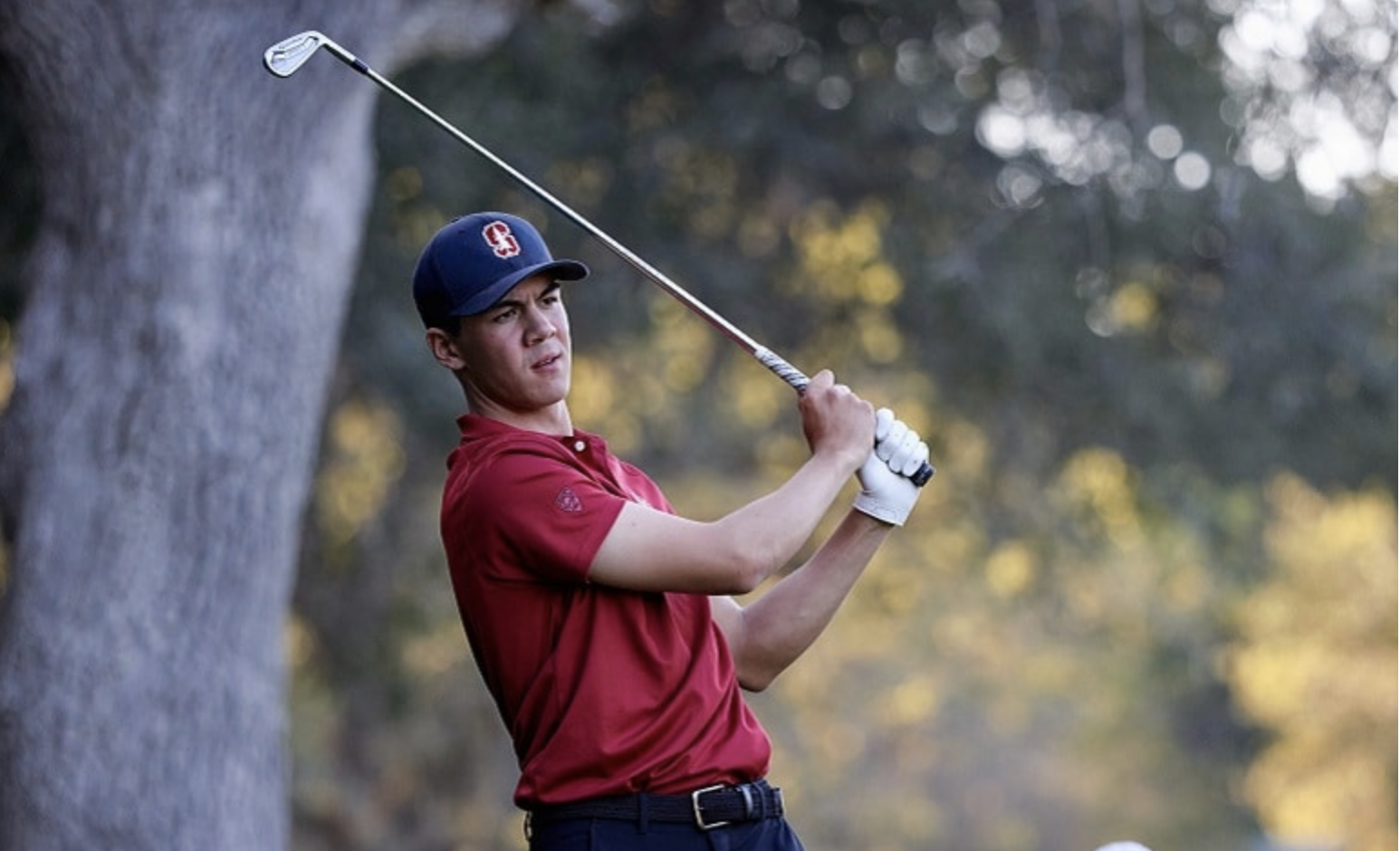STANFORD, CALIFORNIA– I was extremely fortunate to catch up with Michael Thorbjornsen, the world’s third-ranked amateur golfer (WAGR). We discussed overcoming adversity on the golf course, having his best friend as his caddie, and competing in professional events against his childhood idols.
The 21-year old Wellesley, MA native is a junior on the Men’s Golf Team at Stanford University. He hopes to follow in the footsteps of Tiger Woods and play professionally after finishing his career at Stanford. He conveyed: “My golf idol is definitely Tiger Woods. He’s inspired me ever since I picked up a club. As a fellow Stanford Cardinal with his competitive spirit, it’s hard not to root for him.” Woods has won 15 majors and will be looking to win another at next month’s PGA Championship. The tournament will be played May 18-21 at Oak Hill Country Club (Rochester, NY).
Image courtesy of Associated Press
Thorbjornsen has already played in three professional events, including the 2022 U.S. Open. He has been invited to play these events as an amateur, as a result of his strong performances in individual events and overall success at Stanford. The early highlight was a 4th place finish in last year’s Travelers Championship in Hartford, CT. During the final round of this tournament, he sparked the crowds at TPC River Highlands into pandemonium, rattling off five birdies in a row, as thousands gathered to watch him. On this scorching New England summer day, he had announced his introduction to the world of golf.
Despite not being able to earn tournament prize money as an amateur, playing in these PGA Tour events is an immense privilege and many golfers’ dream. He would have taken home over $400,000 if not for his amateur status. When asked about playing against some of his childhood idols, he conveyed the importance of keeping focus once the round begins. Michael said, “Playing against my childhood idols is unbelievable and sometimes I’ll still get starstruck. But right when I tee off, it’s me against the golf course.”
His childhood best friend Drew Cohen is his caddie. “Having Drew on the bag is amazing because it’s nice having a familiar face,” he said. “We’ve been playing together since we were little kids so he knows my game quite well. Even though we are really close, it’s all business on the course and I’m excited to see how we develop.”
Image courtesy of Getty Images
When asked about his advice for young athletes he said, “I'd say that it’s essential to trust the process and to overcome adversity. Not everything’s going to come easy. It’s important how you respond.”
A key differentiator between elite and casual golfers is the ability to bounce back after a poor hole. Many casual golfers will have a “blow-up” hole disrupting their entire round. On the other hand, elite golfers have been trained to overcome adversity and stay on track.
Image courtesy of Getty Images
“Bounce Back Percentage” is a statistic that shows the percentage of holes where a player scored worse than par immediately followed by a hole that the player scored better than par. In Michael’s case, if he were to “bogey” a hole, he understands the importance of responding well with a “birdie” on the next hole.
To give some perspective on how important it is to be able to stay on track, I researched the connection between those with the highest Bounce Back Percentage and the world’s best players. Five of the top ten players currently leading the PGA Tour in Bounce Back Percentage are also in the top ten of the Official World Golf Rankings (Patrick Cantlay, Cameron Young, Scottie Scheffler, Jordan Spieth and Max Homa). This shows an evident association between the ability to “get back on track” and elite performance.
This statistic has been integrated into PGA Tour broadcasts and emphasized by many of the tour’s best players this season. It’s impressive to see elite golfers get into rhythm, playing “in the zone.” However, I would argue that it is equally as impressive to see golfers' response to adversity.
Image courtesy of Stanford Athletics
Michael’s season at Stanford has been impressive, as he has led his team to multiple tournament victories including a first place finish out of 28 teams at the Goodwin (A prestigious annual collegiate tournament held at 2020 PGA Championship Site TPC Harding Park). His team will be a contender at this year’s Pac 12 Championships, which are set to commence on April 28th. He will then be hoping to finish the season on a high note at the NCAA Regionals and the NCAA Championships.
Elsewhere in the amateur golf world, Texas A&M’s Sam Bennett stole the show at the Masters, finishing in the Top 20, as the low-amateur (lowest score by non-professional player at the Masters). Throughout the week, he received immense attention for the tattoo on his forearm which stated the famous last words of his late father “Don’t wait to do something.” A takeaway from the messages of both up-and coming golfers can be: having a strong response to adversity is essential in order to be successful; don’t waste any time waiting to “get back up.”
Image courtesy of Sky Sports




